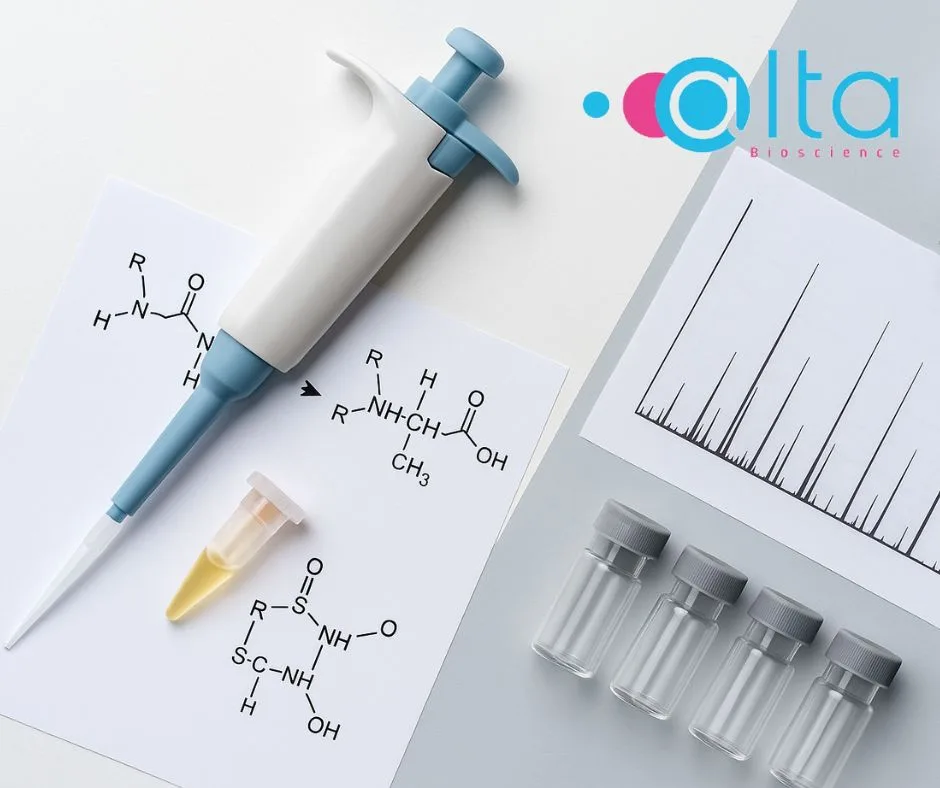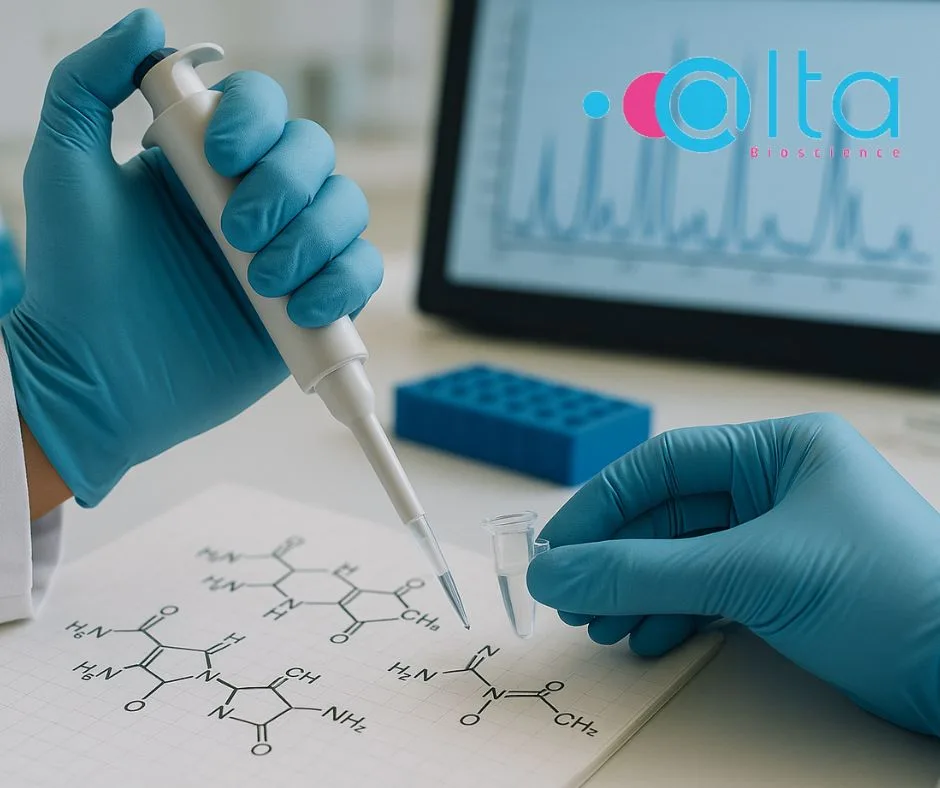Hydroxyproline Analysis
Hydroxyproline analysis is a critical tool for industries focused on product quality and integrity. Hydroxyproline, a secondary non-essential amino acid, is primarily found in connective tissue proteins like collagen and elastin, making it a key marker in determining the presence of animal-based ingredients. As a leading provider of amino acid analysis, AltaBioscience offers precise and reliable hydroxyproline analysis for companies needing to assess content with the highest accuracy.
Why is a separate Hydroxyproline analysis required?
At AltaBioscience, we utilise a high-resolution analytical program with photometric detection at 440 nm to ensure accurate hydroxyproline quantification. This approach eliminates interference from other amino acids, which can potentially co-elute, providing highly reliable results. Our tailored methodology guarantees precision across a variety of sample types and industry requirements.
Why is hydroxyproline quantification important for our customers?
Understanding and controlling the hydroxyproline content in products is crucial for many industries. This amino acid indicates the presence of animal-derived content, making it essential for product integrity, meeting regulatory requirements, and supporting quality assurance. By tailoring hydroxyproline analysis to meet the needs of specific sectors, AltaBioscience supports a diverse range of applications, from verifying product labelling and compliance in food manufacturing to enhancing the nutritional value of animal feed.
Food industry
Since hydroxyproline is primarily derived from collagen, it is rarely found in plant-based sources. As a result, some food manufacturers use the absence of hydroxyproline to verify vegan claims, especially when products are processed on shared production lines that handle non-vegan ingredients, such as gelatine.
AltaBioscience’s high-resolution method of post-column ninhydrin detection allows us to quantify hydroxyproline content accurately, even at very low levels. This makes our services ideal for detecting trace amounts of hydroxyproline, ensuring confidence in product labelling and compliance with consumer expectations.
Agricultural and farming industry
Hydroxyproline analysis is also valuable in animal nutrition. Supplementing animal feed with hydroxyproline has been shown to enhance growth performance, collagen production, and muscle development in livestock and aquaculture species. For instance, dietary hydroxyproline can support optimal growth in fish farming, improving commercial outcomes for producers.
Our precise quantification techniques enable manufacturers of animal feed to ensure consistent and effective supplementation, driving value in the agricultural and farming sectors.
Healthcare
Collagen-based products play a critical role in healthcare, being widely used in:
- Scaffold for plastic and reconstruction surgery
- Membranes and plugs for dental applications
- Dressings for wound care
- Hydrogels and bone fillers in orthopaedic treatments
Rigorous quality control of collagen-based materials ensures that these products meet stringent healthcare standards. Amino acid analysis, including hydroxyproline quantification, is an essential part of this quality assurance.
Additionally, growing concerns over bovine-derived collagen – due to religious considerations and the risk of Bovine Spongiform Encephalopathy (BSE) transmission – have led to the increased use of alternative marine collagen sources. These include fish skin and bones, jellyfish, and starfish. Hydroxyproline analysis is vital in ensuring these alternative sources contain sufficient hydroxyproline levels to offer compatible structural and functional benefits to bovine collagen.
Other sectors benefitting from hydroxyproline analysis
Hydroxyproline quantification is valuable beyond food, farming, and healthcare. Additional sectors include:
- Cosmetics and personal care: Hydroxyproline is a marker for collagen in beauty products such as anti-ageing creams and serums, where quality control is essential to verify claims of enhanced skin elasticity and hydration.
- Forensics: Hydroxyproline can serve as an indicator of collagen degradation in forensic applications, aiding in determining the origin and condition of biological samples.
- Industrial materials: Collagen-derived materials, such as gelatine and adhesives, rely on hydroxyproline analysis to maintain product consistency and performance in manufacturing.
Partnering with innovators in collagen research
AltaBioscience has supported pioneering companies developing alternatives to bovine-derived collagen, such as Jellagen, a UK biotechnology company creating medical-grade collagen from jellyfish. By providing bespoke hydroxyproline and hydroxylysine analysis, alongside robust method validation, we helped Jellagen strengthen its regulatory submissions and launch its novel collagen-based products. Read the full Jellagen case study here
Supporting your industry needs
From helping food producers meet labelling and compliance, to ensuring the safety of healthcare materials and optimising animal feed formulations, hydroxyproline analysis plays a vital role in product integrity and compliance across many sectors.
At AltaBioscience, our specialist methods deliver precise, reliable results tailored to your requirements. Whether you’re developing new collagen-based innovations or safeguarding existing product lines, we can provide the expertise and accuracy you need.
For further information on hydroxyproline analysis or other amino acid analysis, please contact us:
T: +44 (0)1527 584495.



